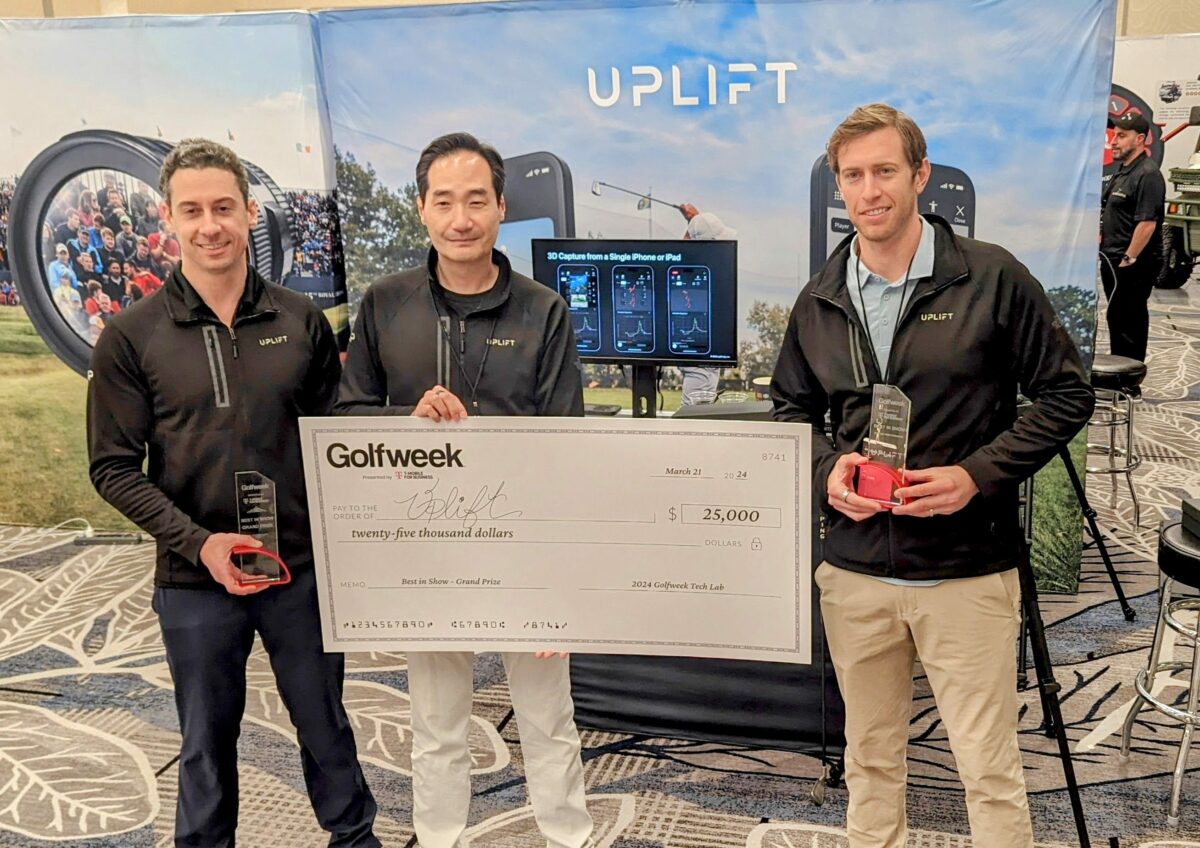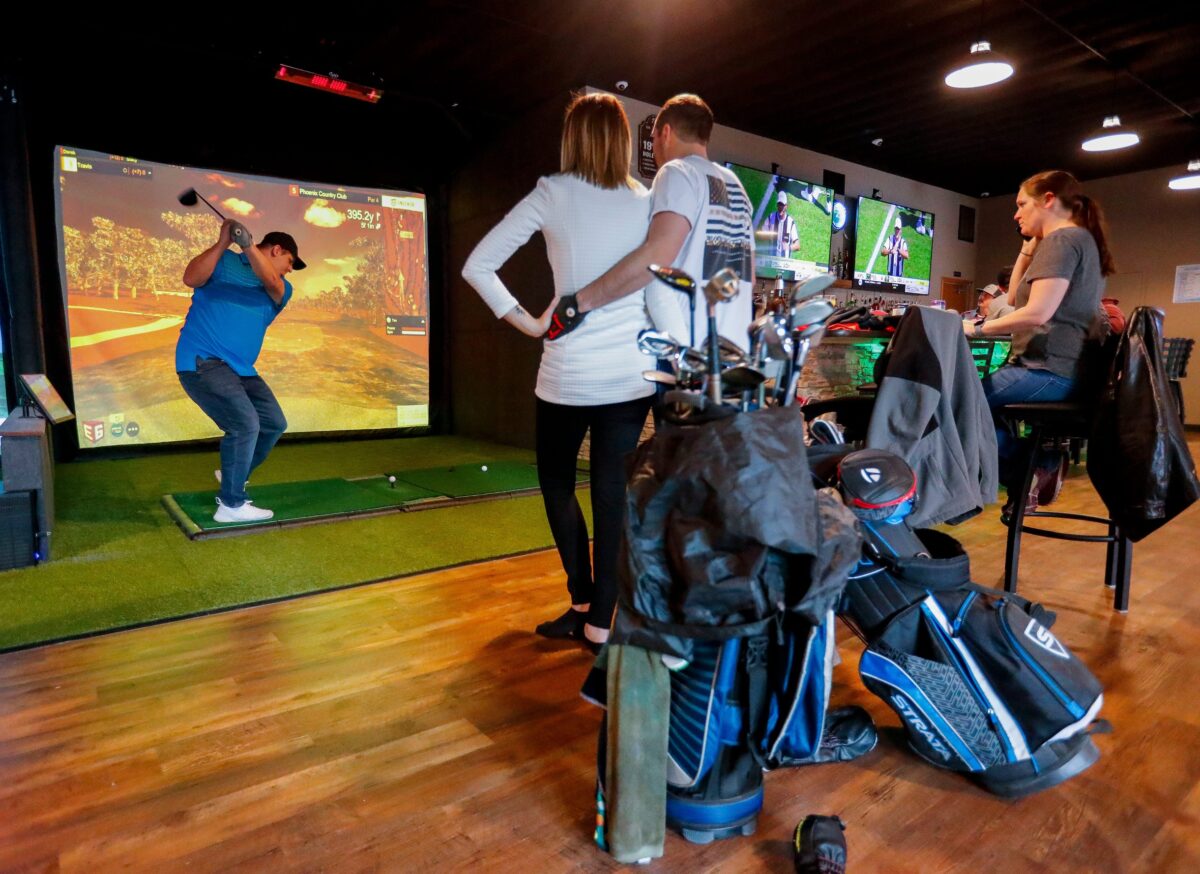ST. SIMONS ISLAND, Ga. — My putting is frequently bad, sometimes awful. Has been for years. I started my first-ever professional putting lesson, at Sea Island’s Golf Performance Center, with that confession.
“Most people don’t say that about themselves,” said senior putting instructor David Angelotti, sounding a bit surprised to hear a student so down on himself.
If he had seen the lowlights from my past 20 years on the greens, he might not have been so perplexed. I told him I play to a scratch handicap index but admitted that I’m probably a 20-handicap putter. He’s used to helping players who don’t know why they miss so many putts, but apparently most are not so brutal in their self-assessment.
Angelotti quickly set out to determine the sources of my woes: bad initial aim that pointed the putter more than 5 degrees right of square, a pull stroke that was an attempt to get the ball back online, poor speed control, frequent bad reads. I miss high. I miss low. Most of all, I just keep missing.
Using several pieces of technology with a reliance on the SAM PuttLab created by German sports technology company Science and Motion, Angelotti was able to break down my broken putting. He loves such a challenge.

“Every single person who walks through that door is a puzzle that I’m trying to piece together, with them, to help them putt better,” Angelotti said.
The technology is key. Before a teaching revolution began nearly 20 years ago with a focus on measuring every aspect of a player’s putting, coaches largely had to rely on their eyes and intuition. The SAM PuttLab, which uses ultrasound to track a player’s stroke as its core function, has allowed coaches to obtain a huge array of data points. The information provided can be as simple or complex as the coach chooses, based on the player’s ability to handle the data.
Other key pieces of technology include lasers that show precisely where the putter is aimed, overhead projectors that illustrate the correct break onto an indoor green and other motion systems such as Capto. Working under Phil Kenyon, the director of putting instruction at Sea Island, Angelotti has at his disposal all the latest gear to help the resort’s stable of tour players as well as amateurs. The lessons aren’t cheap – Sea Island charges $470 for the initial 2-hour assessment for resort guests, but that’s not much more than the price of one more fancy putter that might not help a player hole more attempts.
[jwplayer Zm5sws9e-vgFm21H3]
No aspect of a player’s putting is missed. If the aim at address is bad, the coach can measure by how many degrees. The stroke is wobbly? How wobbly, and how does that interact with the improper aim and start point? It’s all measured, and Angelotti said such knowledge leads to feasible solutions.
The only thing sometimes missing, especially in the case of recreational golfers, is the player’s willingness to try.
Most players – myself included before my trip to Sea Island – never take putting lessons. While many golfers are open to learning more about the full swing, a putting lesson just never enters the equation. Big mistake.
“The mindset is that putting is easy,” Angelotti said. “They’re like, I don’t have to hit it 300 yards. It’s easy to move a putter back and through. This is bred from a lack of knowledge about what it takes to hole a putt. If I take the time to list out all the factors of what a putt actually needs to do to go in, you would be amazed that we ever make anything outside of 10 feet.”
Mike Shannon – a putting coach at TPC Sawgrass in Ponte Vedra, Florida, who has worked with more than 150 tour pros and was an early adopter of technology – put it succinctly: “If you want to get better fast, you can learn a whole lot more quickly in here (in his putting studio) than you can out there on the range.”
Most tour pros have no reluctance to seek help with their putting, and they follow up frequently. Like Fortune 500 CEOs who want to measure every bit of their business, pros want to know what they don’t know. They not only practice, they measure what they practice: aim, stroke, speed control and results.
Everyday amateurs, not so much.
“It can be eye opening,” Shannon said. “That happens for sure. … It’s fun to be able to bring a player in, and within an hour we know exactly which direction they need to go.”

There are plenty of putting technologies that can help a player these days, with SAM PuttLab being among the most popular. Science and Motion has sold more than 2,000 of the units around the world since its inception in 2003 introduced a new methodology to measuring a putting stroke.
Christian Marquardt, managing director for Science and Motion and one of the device’s inventors, said that golf instructors Hank Haney and Dave Pelz were among the first to grasp the SAM PuttLab’s potential.
“They were completely stunned that we were able to measure this data on putting, because at that point there was only video available, no data,” Marquardt said. “Nobody knew about putting, measurements, dynamics.”
The company frequently upgrades its machines and software to give more control to the coaches. The latest offering is the SAM PuttStudio, a fully integrated system that provides 3D replay, high-speed video, ball tracking, balance analysis and green-reading training on a tilting practice platform.
The company focuses on selling the basic $7,000 PuttLab to coaches and not players themselves, as many players might struggle to interpret all the data. Coaches can take courses on PuttLab to learn how to help students of all levels.
One of the key measurable aspects of a player’s putting is consistency. If a right-handed player aims 2 degrees left, for example, but pushes the ball toward the hole consistently, that might not be a problem. If that push varies too much, it could be the kiss of death.
“In putting, there is not really a model, so we have different strategies,” Marquardt said. “At the same time, we see these professional players are extremely consistent when putting. So we know the consistency levels for all the different aspects we measure very precisely. …
“If you have a consistent pattern, you are able to produce a consistent result. What you do, your stroke, might include some functional problems, but particularly in putting, you might have compensations. If you are consistent, that is the foundation of solid putting.”
Angelotti said his PuttLab system measures consistency as a standard deviation of all putts hit with the system in 2018. Tour pros frequently exceed a consistency level of 75 percent and approach 100 percent, while amateurs might have aspects of their putting that measure as low as 10 percent.
Marquardt said that while all the data can be overwhelming if improperly interpreted or applied, the focus remains on the individual student.
“It is very important to understand that putting can be about the individual,” he said. “It’s like a fingerprint. If you just go for model technique, it can be very difficult. We need to take care of the integrity of you as a person in putting. This is very important.
“If you find something that works for you, just try to make it consistent. Find a way to work on it so that it becomes a pattern that is repeatable to where you can build up your mental skills to trust what you are doing.”

This story didn’t have a very happy start, what with all my missed putts. The ending is yet to be written but is trending in a much more satisfying direction.
Angelotti attributed my bad aim and pull stroke to years of my right hand over-rotating through my stroke. He prescribed a pencil-style putting grip with the shaft running between my thumb and forefinger of my right hand, which eliminates much of the slap from my stroke.
He also had me practice with the ball resting on a mirror, allowing me to look down and make sure my dominant left eye is directly over the ball at address. I incorporated a couple of others drills, such as suspending a string several inches off the ground between two sticks. The taut string runs past the hole and allows me to see a straight line. I also can use the string as a guide for my putter’s alignment aid.
I’m not a completely reformed putter by any stretch, but the results have been encouraging. After two months of regular practice, I am making considerably more putts inside 10 feet. Adding to my confidence was a recent practice session in which I made 87 6-footers in a row while using the mirror and string. Before my introduction to technology-based putting lessons, I would have been lucky to make four out of five from that length.
“Players should take putting lessons to, one, better understand what they do,” Angelotti said. “And two, to have a game plan for improvement. If you’re just guessing, you’re not going to get anywhere. You might have a couple of wrongs that make a right every now and then, but most of the time you’re just going to keep getting it wrong.”
[lawrence-related id=778033956,778033895,778033715]











